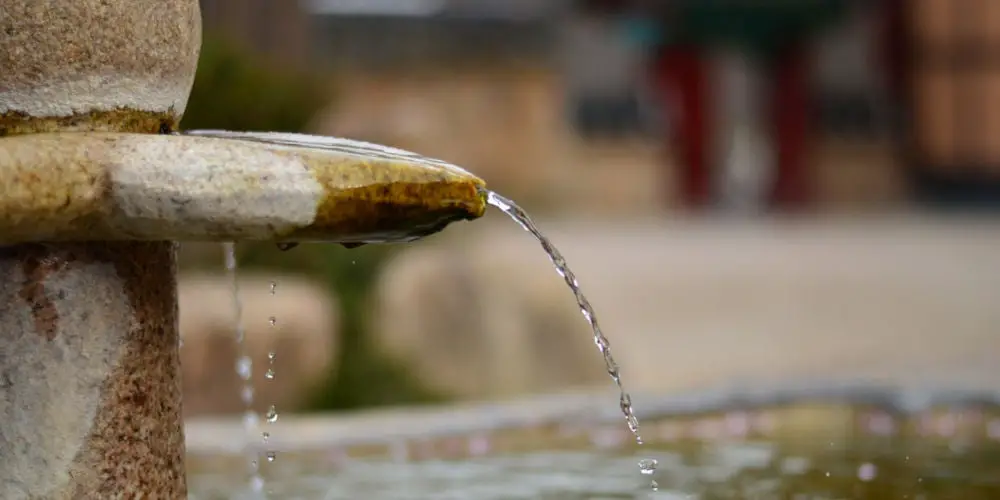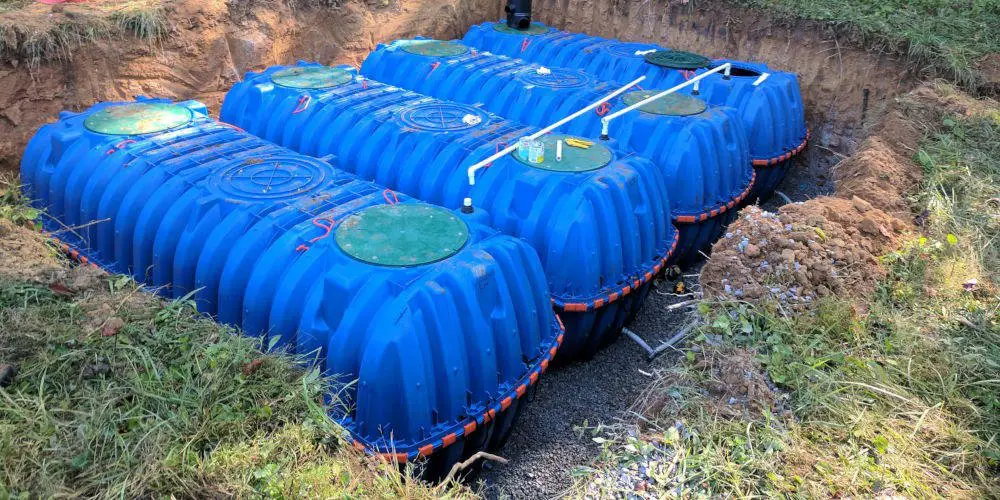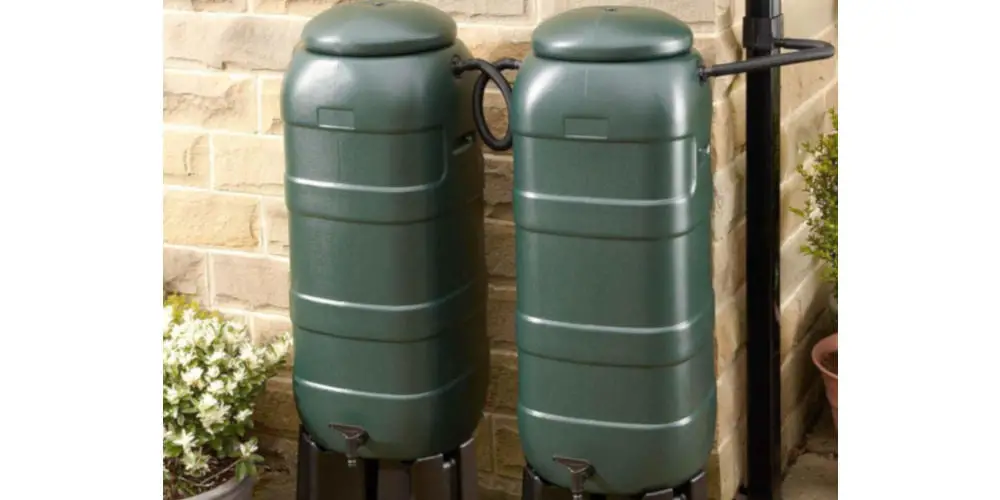Can DIY rainwater harvesting systems save you money?

As rain often pours from the sky, we often ponder if a DIY rainwater harvesting systems are worth the investment and are eco-friendly as they promise.
The process of collecting and storing rainwater can lower bills and form part of a home flood protection system. While you can’t drink it, recycled rainwater do has several uses.
Most DIY rainwater harvesting systems feed toilets and gardens, amongst other non-potable purposes. Some even feed washing machines, as the soft rain is ideal for laundry as it eliminates the need for conditioners.
By using this harvested rainwater you reduce the need to draw water from the mains, lowering your bills. Also, you protect the drainage system from getting filled as the system holds run-off rainwater.
How do DIY rainwater harvesting systems work?
Typically, the roof is the primary collection point for rainwater as it’s already set-up to pass water through the guttering and downpipes to ground level. So, changing the final destination from a drain to a storage tank is simple.
The roof, while not perfectly clean, has fewer contaminants than other collection surfaces.
The collected water passes into a holding tank, which can be buried underground or at the side of the house. The tank size depends on how large the property is, the intended use of the collected water and what space is available.
Before reaching the tank, the water passes through a filter, stopping any debris in the water. Each filter acts slightly differently depending on the end-use. For example, water intended for washing clothes needs to be of better quality than water for gardening.
Within the tank are a few sensors which monitor the water level. Some tanks also provide additional information such as the temperature of the water, pump pressure and fault diagnosing software.
Underground systems use a pump to move the water to where it needs to be used. Other systems store the water in the attic and use gravity to move the water.
Unlike your mains supply, which can be used throughout the property, you will need to install a separate pipe system for your harvested water. This will connect to areas like your toilet, shower or washing machine.
Of course, you’ll also need a backup water supply as a rainwater collection system will not satisfy or be suitable for all of your water demand.
There will also need to be backup piping that can cut in if the water tank runs dry, which happens if you have a small tank and a period of low rainfall.
What is Greywater?
Often confused with rainwater harvesting, greywater recycling is very different. Greywater is the reuse of water that has been used for showers, hand washing and washing machines.
Unlike rainwater, it can’t be simply used around the home. Greywater must be treated first to be useable. Typically in a domestic system, greywater passes through a treatment unit where it is filtered and disinfected.
With this process complete, the water flows into the storage unit that usually feeds toilets. On average per person, daily supply rough equals demand.
Greywater recycling isn’t as popular as rain harvesting but does reduce your main water usage. This, in turn, boosts your home’s sustainability credentials and minimises your environmental impact.
In the UK, there are several greywater specialists such as Aquaco and Aqulility.

How much rainwater can I collect?
The amount of rainwater you can collect depends on where you are in the UK and the size of your roof.
Finding out the expected annual rainfall per m2 on your property is actually straight forward. The Met Office website has average values for all every area of the UK.
Then you need to calculate the area of your property’s roof or what’s known as the catchment area. If you already have a floorplan then you have a rough figure as the roof’s area is a similar size to a single story. If not, you’ll need to measure your property.
Now for the tricky maths! Here’s how to Calculate the amount of rainwater you can collect:
Average rainfall (m) x roof area (m2) = available water (m3)
For example, a 3-bed semi measures 5 by 10 metres and so our roof area is 50m2 (5 x 10). Our house is Birmingham, so we would expect the average annual rainfall to be around 670 mm (or 0.67m).
Multiplying 0.67 m (rainfall) by 50m2 (roof area) equals 33.5m3 (available water).
However, this is the maximum amount of available water as some will be lost to evaporation and overflow. So, it’s likely that you can collect around 80% of rainwater. So, in reality, we’re likely to harvest around 26.8m3 (33.5 m3 x 0.8) of usable water per annum.
The other factor to consider is how your roof collects water. You may only be able to harvest water from one side of the property as laying additional pipework is costly.
Of course, it’s worth talking with a specialist as they will be able to advise on the best options for your property and budget.
Can neighbours harvest rainwater together?
Communal DIY rainwater harvesting systems are slightly more efficient than each property using a separate system. Typically, the communal tank is underground in a central location and each house feed directly.
As multiple properties feed into the system, each requires less mains backup and can survive on a smaller capacity. Typically each property only needs 1,000 litres (or 1 m3) of capacity.
Therefore, a single 10 m3 tank can service 10 properties with ease. The cost of buying and installing a single 10 m3 tank is a far less than the cost of purchasing 10 separate 2 m³ versions.
A communal system, therefore, offers a cost-saving, an efficiency gain and should lead to less demand for treated water.
What’s the ideal tank size?
As weather patterns are random at best and it doesn’t rain daily, you’ll need a tank with excess capacity. A large tank will enable you to store harvested rainwater and avoid having to draw water from the mains, especially if there’s a prolonged dry spell.
As a rule of thumb, 5% of the available annual rainfall is a good starting point for the tank’s storage capacity. In practice, this means a tank of 1,500 to 2,000 litres (1.5 m3 to 2 m3) will be able to store enough rainwater to supply the toilets and washing machine in an average 3-bed semi.
Amazon stocks a wide range of tanks for DIY rainwater harvesting systems, including a 1600L Technik Rain Tank System and a 3200L Technik Rain Tank System 3200L. Either will provide more than enough capacity for most homes.

What’s the cost of a rainwater harvesting system?
DIY rainwater harvesting systems vary in price and depends on a range of factors. So, it’s impossible to accurately answer this question.
As we’ve already covered, tanks can easily cost thousands of pounds and that’s before installation costs, which could easily double the investment.
For example, positioning a tank above ground in a garden is likely to cost far less than having to dig a suitable hole and plumb it in. Choosing to DIY install will keep the budget intact.
Once you’ve invested in system, the running costs are negligible. For example, a pump costs less than £10 per year to maintain.
It’s best to obtain custom quotes from at least 3 companies before purchasing a system. If you’re exploring DIY options, then it’s worth talking to Kingspan, Freerain and Gutter Mate.
What about maintenance?
Most DIY rainwater harvesting systems require minimal upkeep. There are even self-cleaning systems, some of which reject the first flush of water as this tends to contain the most debris.
As the system uses a pump, they do require maintenance but again, this costs less than £10 per year. Like the pump, the filtration system requires regularly clean as it prevents leaves and debris from entering the tank.
When the tank is full, any excess siphons off to the surface water drainage system as normal. This overflow will also remove floating contaminants, which is a good reason to avoid oversizing the tank.
Does the system pay for itself?
As even a basic system can cost a few thousand pounds, one of the most frequently asked questions is how long will it take to repay the investment.
The average water bill includes charges for supplying and disposing of water. If you’re on a meter, then both are billed based on actual usage (known as a combined charge).
Working on a combined charge of £2 per m3, we can easily calculate how much you’ll save by using a rainwater harvesting system.
Examples
Let’s explore two different properties.
Our first is a new-build which harvests rainwater from both side might have a catchment area of 135 m2.
The second property is older and only harvest rainwater from one side and has a catchment area of 50 m2. While we could expand the pipework, it will be costly.
We’re going to using an annual rainfall figure of 0.67m (which we calculated earlier). To make it easy, we’ll use the same system which costs £3000 and has a tank size of 3,000 litres.
As we’ll collect roughly 67 m3 of rainwater each year from our new-build, our annual saving is £135. This means it’ll take just under 21 years to repay the investment.
On the second property, we’ll only collect around 27m3 of rainwater per year and so will save £54. Repaying the initial investment will take 55 years.
As you can see, the bigger the catchment area, the faster the payoff. Of course, you could look at ways to reduce installation costs or decide to install new guttering across the entire roof.
Other factors
Water prices can also have a big impact on the repayment rate. If they increase, you’ll be able to repay the cost of your rainwater harvesting system faster.
We haven’t mention maintenance costs, which should be minimal or the small amount of energy required to run the pump. Also, our figures assume that the household uses all of the harvested rainwater.

How does the mains backup work?
As harvesting rainwater won’t supply all the water you need, you will have to use some from the mains. However, there are several ways to combine both systems.
The most common is a direct-pumped system, which uses a float switch inside the storage tank. A sensor monitors the internal level and when it reaches a critical low point, the float switch opens. Mains water than partially refills the tank, leaving room for fresh rainwater.
You must install the backup in accordance with the water regulations, to prevent contamination of the mains supply. There are legal standards regarding how pipes must be marked up, including the clear identification of rainwater pipework. If in doubt, hire a professional.
Are DIY rainwater harvesting systems sustainable?
There’s still a hot debate as to the overall environmental impact and effectiveness of rainwater harvesting. While you might save energy and water, DIY rainwater harvesting systems require investment to construct, install, run and maintain.
One thing is for certain, the payback period is lengthy. This is especially true if you consider you can’t drink the harvested water.
Also, we haven’t considered if your property is already fairly water efficient. In this case, your demand for non-drinking (non-potable) water may be so low that installing a rainwater harvesting system will provide a tiny benefit. So isn’t worth the investment.
Before investing in any of the available DIY rainwater harvesting systems, talk to experts and do your own research, and carry out a cost/benefit analysis.




